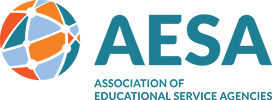February 12, 2024
FY24 Appropriations Update,
IDEA Full Funding Coalition, and Class of 2024 FAFSA Hurdles
This update comes from the Committee For Education Funding. AESA is a proud member of the coalition and serves on the CEF Board.
At this point, we understand that all 12 appropriations subcommittees are doing 4-corners negotiations now on program funding levels. That means that the four corners of each committee—the lead Republican and Democrat for both the House and Senate subcommittee—are negotiating their respective funding decisions. Put another way, this means that House and Senate minority and majority staff and leaders are involved in the negotiations so that one "pre-conferenced" bill will emerge, negating the need for the House and Senate to pass their versions and then conference to produce a final bill later. All 12 subcommittees are working on the same deadlines, regardless of whether their funding expires on March 1 or March 8, as the Labor-HHS-Education bill does.
Most non-defense discretionary (NDD) programs are at risk of a cut - The outlook for education funding is tough. There are some programs within NDD with funding needs that have increased by about $20 billion, while at the same time, overall funding is frozen, meaning there will be a $20 billion-ish cut spread across NDD programs. The general feedback from those involved is
that there are not likely to be many funding increases for education programs, and any increases are likely to be small.
IDEA Full Funding Coalition Sends FY24 Letter to Congress
As Congress moves forward with negotiations to finalize its FY24 appropriations package, the chairs of the IDEA Full Funding Coalition sent a priority letter supporting the protection and
prioritization of investment in IDEA. AESA is proud to co-chair the IDEA Full Funding Coalition through our partnership with AASA.
Guest Post from the National College Attainment Network (NCAN): Class of 2024 Faces FAFSA Hurdles; How Do We Help Them Leap Over?
There’s been a lot of commotion around the FAFSA this academic year, and it hasn’t quite settled down yet. The Free Application for Federal Student Aid is an important form required for receiving federal financial aid like the Pell Grant and federal direct loans. Although the FAFSA normally opens on October 1, a delayed rollout due to a substantial overhaul pushed
that date until December 31.
After a stop-and-go opening, the FAFSA rollout is smoothing out, but students and families have a big gap to close relative to last year. Data show that as of January 26, this year’s seniors submitted 57% fewer FAFSAs than the class of 2023 through the same date last year. This year’s FAFSA rollout is putting a significant strain on high school counselors, college and career personnel, and other practitioners who support students with FAFSA completion and other college-going milestones. Here’s why in a nutshell:
- The FAFSA is so different from previous years that every practitioner needs training (or at least PD) on the new process, which pulls student and family federal tax information directly in from the IRS and ideally streamlines the process considerably.
- The opening of the FAFSA isn’t the only thing that’s delayed. Colleges and universities won’t receive the information students submitted until mid-March at the earliest, which means that award letters will not likely arrive until at least April. With College Decision Day traditionally being May 1, this gives students a much smaller window to consider their pathways after high school.
- There are still technical issues with the new FAFSA keeping whole swaths of students from submitting the form. Notably, “mixed-status families” where one or more “contributors” (parents or guardians) do not have a Social Security Number still cannot submit the form, and there is no timeline for a workaround or fix to this issue.
- The student-level FAFSA completion data that so many schools have come to rely on to keep track of which students have and haven’t completed a FAFSA yet is delayed until mid-March to early April. Right now the only data on FAFSA submission available is at the high school level.
In the face of all this, how can district leaders best support their students and staff in navigating this process? The National College Attainment Network (NCAN) has a Better FAFSA resources page with resources you can share with staff, students, and families. Some highlights include:
- Navigating the Challenges of the 2024-25 FAFSA is continuously updated and highlights the FAFSA’s known issues (and workarounds if they exist). It is a good partner to Federal Student Aid’s Pro-Tips for the 2024-25 FAFSA Form page.
- The FAFSA Awareness Toolkit has social media for students and families, samples of newsletter/email text for district and school communications, and an FAQ.
- The Training Toolkit has slide decks, resources, and tools for school counselors and other adults who are assisting with FAFSA. Be sure to check out the free training webinar series, too.
- Lastly, this FAFSA Tracker shows data on FAFSA submissions at the national, state, district, and school levels, and is a good stopgap until student-level FAFSA data become available sometime in mid-March.
AESA and AASA are working with NCAN and will continue to keep you abreast of news, updates, and resources that can help to make this FAFSA cycle run smoother. Although the new FAFSA means expanded Pell Grant eligibility and increased Pell Grant awards for many students, the class of 2024 faces significant challenges this spring to get back to the levels of FAFSA completion previous classes have achieved.
